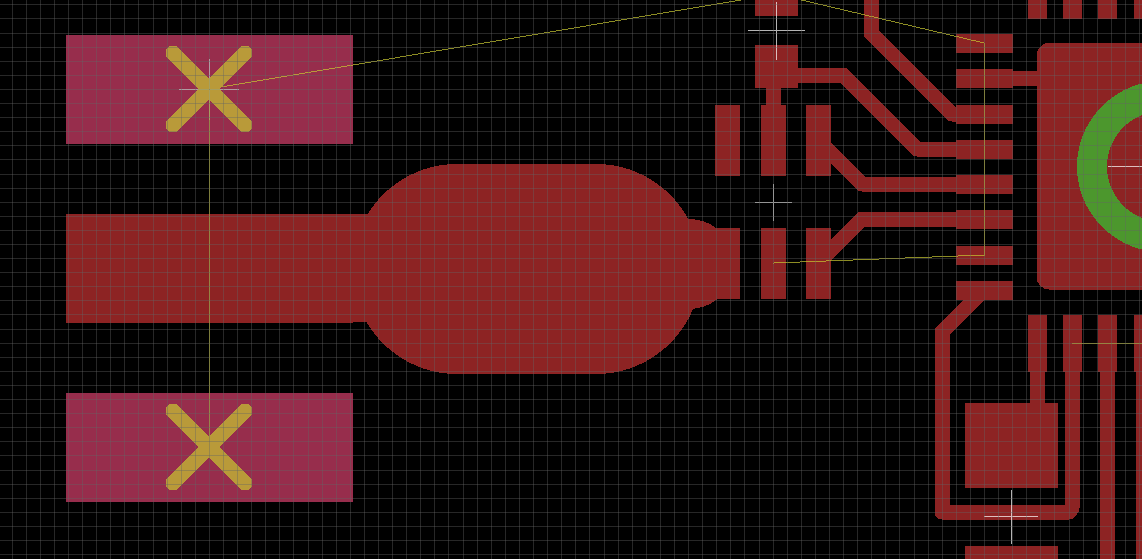I am using the Johanson balun (www.johansontechnology.com/.../Johanson_nRF8001_App_Note_v2.pdf) to interface the differential input of the nRF8001. The PCB manufacture I am using is OshPark, which offers a FR408 with dielectric constant of 3.66. Because of this, my antenna feed line is only 13.5 mils thick to match 50 ohms.
Because of the smaller antenna feed line width, there are sharp right angles connecting from the SMA pad to the balun pad. Is this something I should be concerned about? Should I attempt to smooth the trace to the SMA/balun pad?
Also, should I care about the length of the feed line? I always thought the length of the feed line does not matter for the impedance matching, however I would like to clarify.
Thanks
I have attached an image of the feed line.




